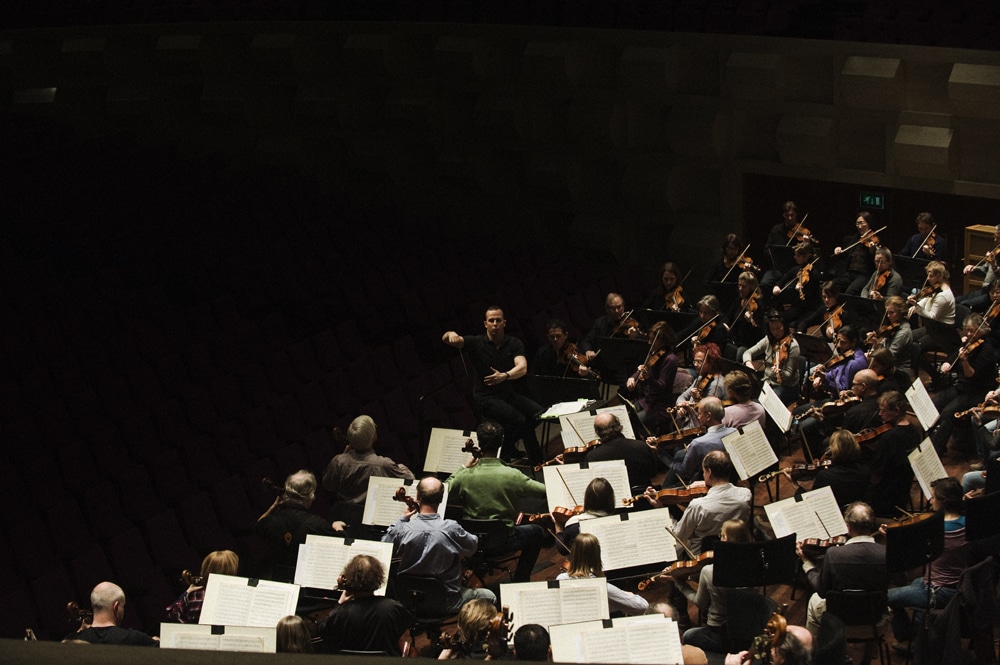Have you ever found yourself in a hyper-productive period? You’re making progress on your goals, checking boxes on your list. It’s like music to your ears. But to everyone else in your life, it’s more like noise.
When I first started in publishing I was determined to succeed. I would get to the office at 5:00 a.m. and stay till 6:00 p.m. I even came in on Saturdays. All told, I clocked about seventy hours a week.
I’ve since learned there’s a word for this kind of schedule: crazy.
At the time I thought I was doing what I needed to win. I had a family at home who needed me, but I was putting everything into my job. And what worked for me was terrible for them. I was like the violin in the orchestra that wouldn’t make room for the horns and flutes to play their part of the symphony.
I often think life is like a symphony orchestra. Like an orchestra, our lives are divided into different parts or areas, each with their own focus. Where an orchestra has strings, brass, woodwinds, and percussion, our lives have work, family, faith, fitness, and so on.
When I speak about life planning I call these life accounts, and each one plays in important part in the total “sound” of our life. If we focus on one to the exclusion of the others, we’re not playing the music right.
A person might be uber-successful at work, but their family hates them. Or they may be very involved at church but unemployed with little interest in finding work. The performance is unpleasant and noisy.
Instead of ignoring parts of the orchestra, a symphonic life consists of five habits that ensure harmony:
- Diversity. There’s nothing wrong with a tuba, but it’s not enough on its own. A symphonic life is an ensemble. It’s only when all the instruments are playing that the music is everything it can be. We have to have enough life accounts to lead a full life. Even the little triangle needs to chime.
- Space. A symphonic life makes room for all the instruments to contribute. The first violin doesn’t try stealing the parts of the woodwinds or the brass. In the same way, we can’t allow one life account to hog the clock. We only make true music when we give each life account have the room it needs to be heard.
- Pace. It’s no good for our life accounts to move at their own speed apart from the others. If work runs ahead of family and faith and hobbies are out of sync, we’ll have problems—the same as if the strings aren’t in sync with the percussion. A symphonic life keeps every account on the same beat.
- Common purpose. One way the orchestra maintains diversity, allows the necessary space, and keeps an even pace is that everyone involved shares a common purpose. A symphonic life is no different. Work doesn’t exist for itself—neither do any of the other accounts. They serve a greater, common purpose. And if they don’t, it won’t last.
- A plan. The orchestra has a longstanding organizational pattern. That plan enables the players to demonstrate the diversity, space, pace, and common purpose we’ve been talking about. The symphonic life needs a plan as well—a life plan that outlines the accounts, determines values, and envisions a future that’s sweet to the ears.
The beauty of a symphony is only realized when all the instruments are doing what they’re supposed to do when they’re supposed to do it. Our lives are the same. When we allow one instrument to dominate or play out of sync—for whatever reason—we produce noise. No one enjoys it, eventually not even us.
A symphonic life achieves balance and harmony by letting each aspect of our lives find its proper place on the stage.
Disclosure of Material Connection: Some of the links in the post above are “affiliate links.” This means if you click on the link and purchase the item, we will receive an affiliate commission. Regardless, we only recommend products or services we use and believe will add value to our readers. We are disclosing this in accordance with the Federal Trade Commission’s 16 CFR, Part 255: “Guides Concerning the Use of Endorsements and Testimonials in Advertising.









